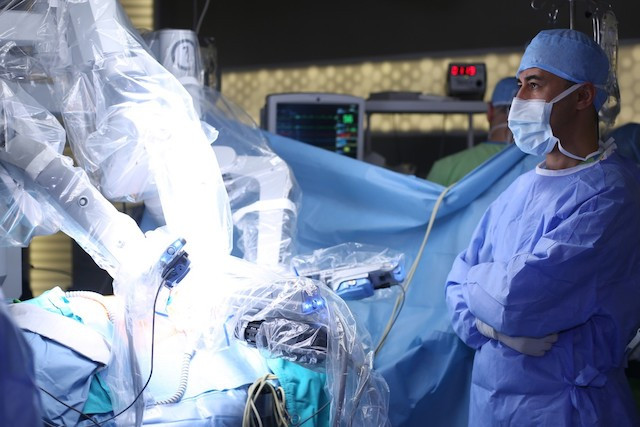“In two or three years, we will have reached the limits of 4G's capabilities. Nothing will work anymore. It'll be like a stopped highway […] This coming traffic jam imposes new ways.” Cliff Konsbruck, director of Post Telecom drew a bleak future for any resistance to change, when he spoke in front of a dozen journalists, for the first workshop organised by an operator.
The graph presented by his director of transport technologies (!), Pierre Scholtes, is a winding road from analog networks in the 1970s to 5G, via 2G (GSM) in 1993, 2G (GPRS) in 2001, 3G in 2003, 4G in 2013, 4G+ in 2016 and VoLTE and VoWifi in 2017.
5G promises at least 10 times higher latency, 10 times higher speed, 10 times higher capacity, higher security, higher density of connections per square kilometre and network slicing, according to Post's forecasts. Gently, Post's staff make fun of operators who will boast 5G just in their logo, using 3G or 4G.

The slight irony can be explained by the fact that the ARPU, a key indicator of consumer consumption that tells how much each person spends on average to use their smartphone, has fallen further for mobile packages, by almost 7% to €23.50, according to the annual report of the Luxembourg Institute of Regulation. And every new customer is going to count.
According to inCITES Consulting, quoted by Digital Lëtzebuerg, between 39 and 63% of Luxembourgers will have a 5G subscription in 2025.
The 749,000 mobile subscribers, up by more than 20% in one year, will want to go even faster for:
- playing on their smartphone, as already proposed by Shadow , GeForce Now from Nvidia or Stadia from Google, available everywhere but not in Luxembourg;
- taking advantage of video streaming, now a trench war between Netflix, Apple Video, Disney and others;
- switching to virtual and augmented reality, such as, for example, to visit a museum with a feeling of immersion impossible to get from the best tour guides.
A first... which is a third
On 13 July, a team of Italian surgeons shouted “cock-a-doodle-doo” after operating on the vocal cords of a deceased patient using clamps and lasers remotely controlled with 5G by surgeons 15 kilometres away.
That's three times further than the last remote operation. At the end of February 2019, at the Mobile World Congress in Barcelona, another surgeon had operated on a patient suffering from an intestinal tumour from the main stage of the event when he was five kilometres away in a clinic in the Catalan capital.
A month later, a patient with Parkinson's disease was operated on the brain by Dr. Ling Zhipei, 3,000 kilometres away.
Except that these three operations powered 5G were preceded by an operation on 7 September 2001, 7,000 kilometres away. From New York, surgeons had operated on the deficient gallbladder of a 78-year-old patient in a Strasbourg hospital... thanks to a very high-speed fibre optic cable.

Autonomous car, smart city and industry 4.0
5G should also encourage the development of the autonomous car, which fits perfectly into the Luxembourg project with France and Germany. Will it solve the famous “hole” between the networks of two countries, which not only border residents but also those who live close to the borders experience? Not sure, say the experts, since international regulations prevent airwaves from being sent to neighbouring countries.
Following the example of experiments carried out, for example, at the Luxembourg Institute of Science and Technology, 5G will enable data to be transmitted in real time to infrastructure managers, whether electrical or logistical. One of the projects, for example, makes it possible to organise the collection of household waste bins according to their degree of filling. A large number of projects will be launched in the coming years to manage electricity, heating and car parks, among other things.
And among the operators’ future new customers are manufacturers. Here again, the technology will enable them to install sensors everywhere and optimise their production, even on several production sites. Augmented reality helmets and goggles will be used for real-time maintenance, and robots will be synchronised.
Digital Lëtzebuerg has selected around thirty fairly specific projects that illustrate each of these developments.
This article was originally published in French on Paperjam.lu
